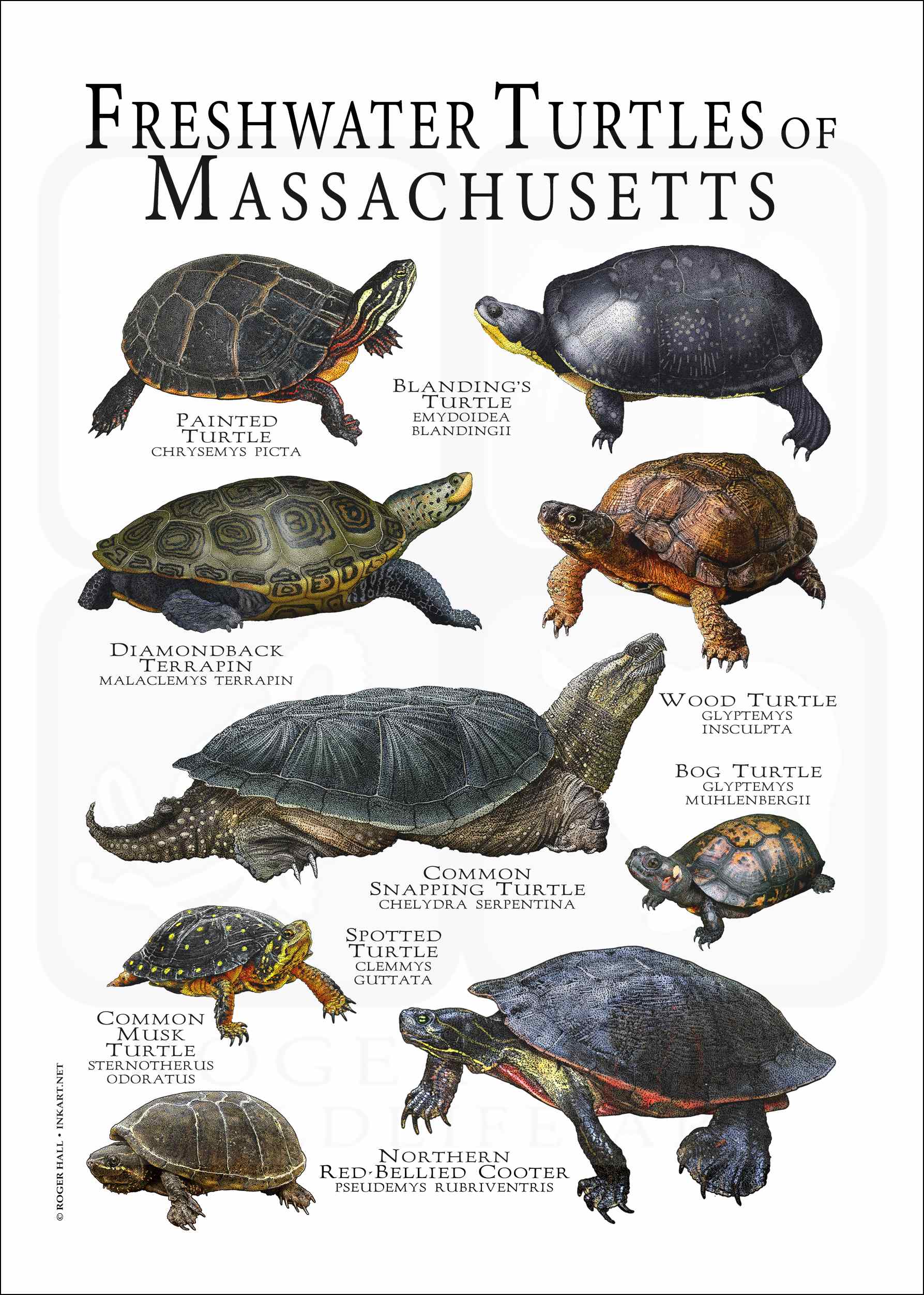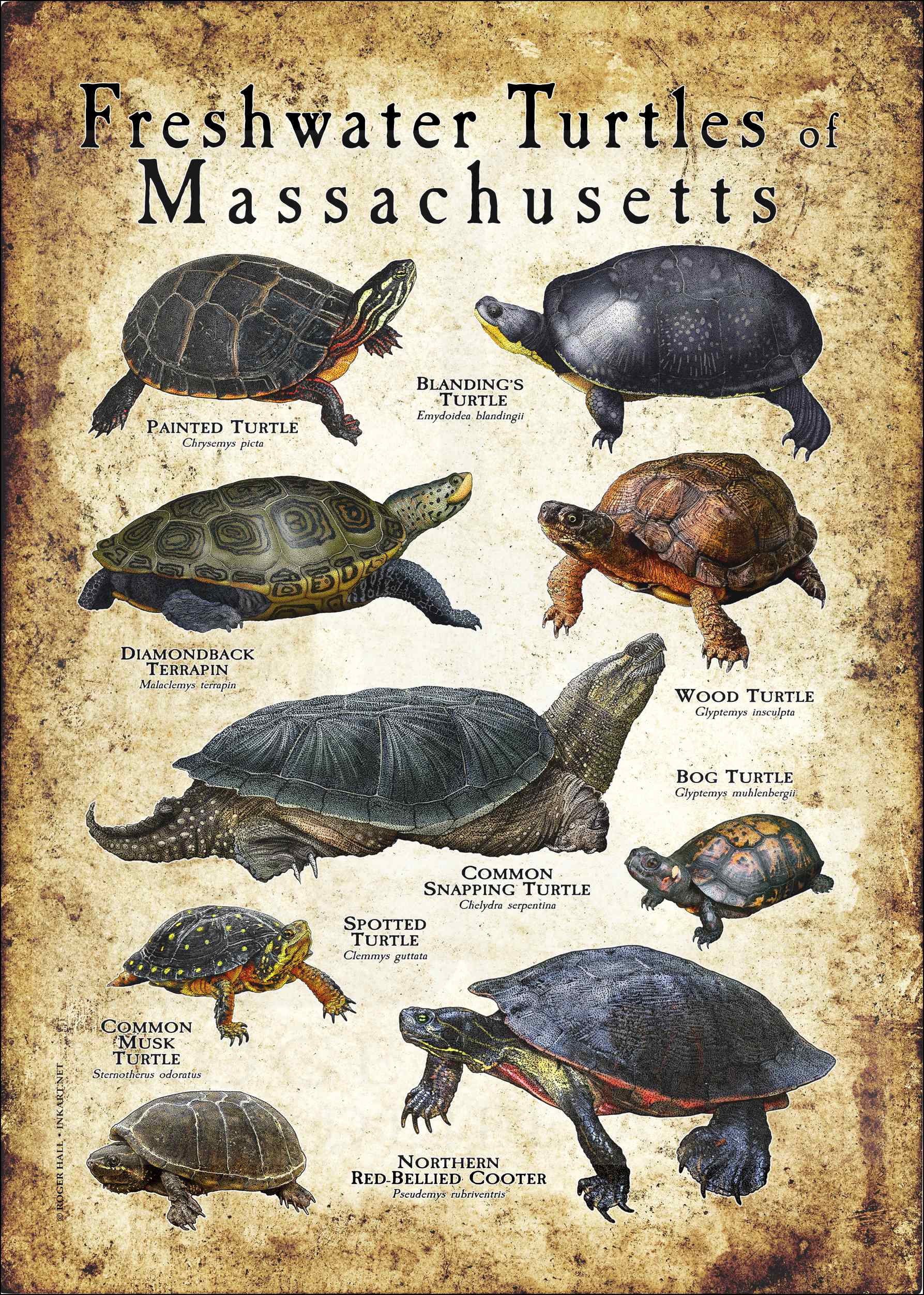Turtles of Massachusetts
As the sun sets over the marsachusetts landscape, a unique spectacle unfolds: turtles of various kinds emerge to bask in the fading light or settle into their nests for the night. This article delves into the fascinating world of Massachusetts turtles, exploring their species, habitats, behaviors, and the conservation efforts aimed at protecting these remarkable creatures.

Diverse Species of Massachusetts Turtles
The state of Massachusetts is home to a diversity of turtles, each with its own story and ecological niche. The Eastern Box Turtle (Terrapene carolina carolina) is perhaps the most recognized, with its high, dome-shaped carapace that provides protection against predators but also makes it a slow mover. Then there’s the Painted Turtle (Chrysemys picta), known for its brightly patterned shell that one might see sunning itself on a log in local ponds.
Moving through different habitats, the Spiny Softshell (Apalone spinifera), with its leathery shell, prefers sandy-bottomed rivers and streams, making it less common in the public eye but no less intriguing. Similarly, the Common Snapping Turtle (Chelydra serpentina) often lurks in muddy waters, emerging to bask or lay eggs, showcasing the diversity in both appearance and behavior among the turtles of Massachusetts.
Habitats and Seasonal Activities
Massachusetts provides a mosaic of habitats that cater to the needs of these turtles. Wetlands, rivers, lakes, and even woodlands become playgrounds and homes to different species. For instance, Blanding’s Turtles (Emydoidea blandingii) inhabit marshy areas, digging nests in the soft ground to lay their eggs.
Seasonality plays a crucial role in the lives of these turtles. Spring marks the hatching season for many, while summer is often warm enough for turtles to bask, aiding their digestion and the absorption of essential vitamin D. Autumn brings a time for preparation; turtles like the Eastern Box Turtle start digging deeper burrows or finding warm spots under leaves to hibernate through the winter.
Conservation Efforts
Human expansion and environmental changes pose significant threats to turtle populations, prompting robust conservation efforts. Organizations in Massachusetts, like the Massachusetts Division of Fisheries and Wildlife, work tirelessly to monitor turtle populations, study their behaviors, and implement strategies for their protection.

Habitat preservation is key, ensuring turtles have adequate spaces to migrate, mate, and lay eggs without human interference. Efforts also include public education to reduce human-turtle conflicts, promoting awareness about the ecological importance of turtles. Initiatives like the Turtle Crossing Project encourage drivers to slow down or stop for turtles crossing roads, significantly reducing road mortality.
Interactions with Humans
Turtles of Massachusetts often find themselves in human-held environments. From suburban backyards to busy city parks, turtles are observed and sometimes cared for by local residents. However, this interaction isn’t always beneficial. Improper handling, feeding mistakes, or accidental harm due to traffic or habitat destruction can undermine their survival.
Public education focuses on fostering a mutually beneficial coexistence. Information on how to properly assist turtles found in distress or how to build backyard ponds to support turtle habitats are disseminated, ensuring these creatures thrive with minimal human interference.
A Future for Massachusetts Turtles
As we look towards the future, the fate of Massachusetts turtles hinges on our actions today. Through continued research, conservation, and public involvement, these turtles can continue to thrive, contributing to the ecological balance and enriching the biodiversity of the region. Their presence is a testament to nature’s resilience and our responsibility to ensure they continue to dot Massachusetts landscapes.
The turtles of Massachusetts are not just critters to observe; they are integral components of a larger ecosystem, beckoning us to play our part in their conservation journey. Their survival and well-being reflect our own commitment to the environment, a responsibility we must embrace thoughtfully.



